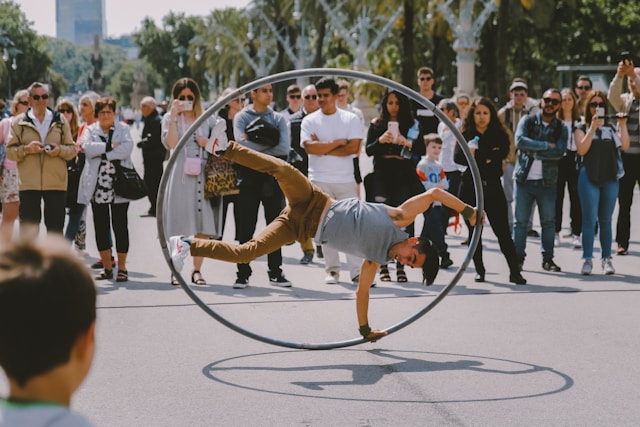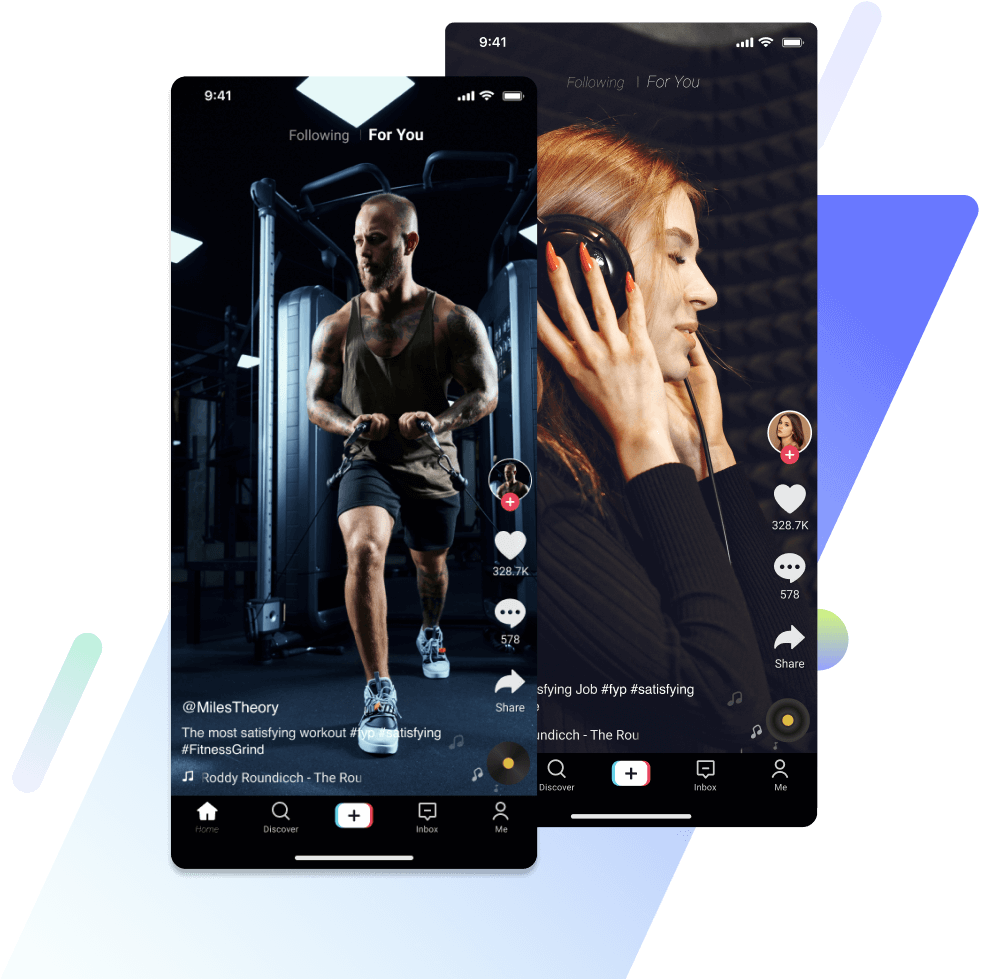Influencers Marketing Statistics: The Hows and Whys
Promoting a product or service with the help of social media influencers is one of the most effective ways to reach target audiences. Influencers marketing statistics have proven the crucial role that influencers play in generating engagement and community-building.
Let’s answer all the hows and whys of this tried-and-true marketing strategy!

B2B Influencer Marketing Statistics
Business-to-business (B2B) marketing used to rely heavily on traditional types of advertising, such as TV and print ads. Despite the popularity and cost-effectiveness of influencer marketing, only 34% of B2B marketers opted for it back in 2020. The following year, however, this number jumped to 46%.
According to the latest reports, 85% of B2B marketers consider influencer marketing as among their most preferred marketing strategies. Here are more B2B influencer marketing statistics that are worthy of note:
- According to a Forbes report, 94% of B2B marketers have greater confidence in influencer marketing’s potential for success.
- In response to the question, “Which of the following contributes most to the success of your marketing programs?” 39% of marketers said “influencer marketing.”
- A 2022 Zen Media study found that B2B influencer marketing programs generated a 520% return on investment (ROI).
- Among marketers who reported the highest influencer marketing success rates, 70% said they outsourced their influencer marketing program.
Using an influencer marketing agency or choosing from the limitless influencer pool on social media has proved to be the most beneficial. Agencies, in particular, often deliver well-established and tried-and-tested influencers across multiple industries. They also offer outreach expertise and expert content creation capabilities.
Independent social media influencers, on the other hand, have the unique advantage of authenticity and a high degree of follower trust. They spend years building genuine connections with their followers and sustaining their engagement through relevant and quality content.

Facts About Social Media Influencers
We’re all familiar with the basic facts about social media influencers. They’re homegrown social media celebrities who create content to grow and engage their community. When they run an influencer campaign, they leverage their fame and influence to help brands drive brand awareness, customer acquisition, and sales.
Their reach, clout, and credibility determine their potential as a brand ambassador in an influencer marketing campaign. And this potential can be quantified in terms of their follower count and engagement rates.
An influencer’s community may represent specific demographics that overlap or perfectly correspond with a brand’s target market. Influencer content, therefore, serves as the perfect conduit between a brand’s message and its intended audience. A brand can tap into an influencer’s highly engaged community to achieve its marketing goals.
In influencer marketing, the smaller the audience, the lower an influencer’s fees, but the targeting is also more focused. Influencers with hundreds of thousands or millions of followers demand the highest rates for a few posts.
These days, if you want your business to stay competitive, you need the right influencer in your team. Influencer-led marketing campaigns are now an indispensable and necessary tool for businesses, whatever their industry.
It may be the only tool a brand has in its marketing toolkit, or it’s among the most reliable and used. It definitely has become a crucial cog in a brand’s marketing machinery.

Influencer Categories
Here’s a quick rundown of how social media classifies influencers and the average influencer marketing budgets for each category:
- Nano-influencers have between one and ten thousand followers. They have a limited but often highly dedicated following, which typically translates into consistently high engagement. They typically charge $10 to $100 per post.
- Micro-influencers have between ten and 100 thousand followers. Their following is small enough to nurture genuine connections, and big enough to deliver rewarding results. Their average rates are between $100 and $500 per post.
- Macro-influencers can be considered legit internet celebrities, with 100K to 1M followers. They have established their credibility and strong influence in their niche/industry. Expect to pay between $5,000–$10,000 per post.
- Mega-influencers have more than one million followers. They have achieved celebrity/industry leader status, usually establish their own brands, and dictate their career paths. They may charge $10,000 or more per post.

How Effective Are Influencers in Marketing?
How effective are influencers in marketing? According to a Harvard Business Review article, the following factors determine an influencer’s effectiveness as a brand ambassador:
1. Follower count. Influencer marketing data has long established that the more followers an influencer has, the more impactful their marketing campaigns are. Their follower numbers determine the breadth of their reach, credibility, and popularity. All of these translate into higher engagement rates.
2. Posting frequency. Influencers must find the right posting frequency to achieve the highest ROI for their partner brands. Posting too infrequently may give the impression that they’re not up-to-date and reliable. They don’t build enough presence on feeds to establish intimacy and trust. Posting too frequently, on the other hand, may create content fatigue among followers. This, in turn, may cause followers to ignore the influencer’s posts or feel annoyed and filter them out.
3. Follower interests. The interests of the influencer’s followers must align with the brand’s domain to achieve a high follower-brand fit score. A high follower-brand fit score means the influencer’s sponsored posts will be more relevant to their followers and, therefore, generate higher engagement.
4. Content originality. An influencer often receives better results when they share original content, or creator-led content, than when they share their partner brand’s content. Viewers are more likely to engage with original content as they perceive it as more authentic and credible.
5. Content tone. An influencer’s post must have just the right degree of positivity to drive high engagement. A post that’s “too positive” may come across as insincere and will not generate the desired audience reaction.

Why Influencer Marketing Is Effective
Let’s take a look at the latest influencer marketing stats, which demonstrate why influencer marketing is effective.
- A whopping 69% of consumers say they trust an influencer’s recommendations, particularly one they’ve been following for a long time.
- According to 60% of marketers, original influencer content designed for marketing outperforms branded posts.
- On TikTok, a mega-influencer post received an average of nearly 330K views worldwide in 2022. A macro-influencer post received an average of more than 38K views.
- TikTok nano-influencers enjoy the highest engagement rate (ER) among other influencer categories, with 15.2 percent ER.
- Nano-influencers on YouTube pull an average of 1.9 percent ER, while mega-influencers averaged 3.4 percent.
- Influencer campaigns surpass traditional advertising methods, generating an average of 4.2% ER. For every ad dollar a brand spends on influencer marketing, it can earn an average of $5.20 in media value.
How Influencer Marketing Benefits Brands
The statistics clearly show why the influencer marketing industry continues to be in high demand to this day. But how exactly do influencer marketing efforts drive benefits for brands? Let’s have a look at more statistics on influencer marketing that further establish its value for brands:
- Increase brand awareness. According to a Mediakix report, influencer campaigns can lead to an 82 percent increase in brand awareness. If you want this reach to generate engagement and sales, make sure an influencer’s followers match your target market.
- Promote brand authenticity. As previously mentioned, influencers have built a relationship with their followers based on trust. Their followers rely on and trust their favorite influencer’s recommendations.
- Better quality and higher engagement. Compared to other marketing channels, influencer marketing offers the unique advantage of connecting directly with a brand’s target audience. Social media connections often result in higher engagement from genuinely interested individuals. Influencers with a niche following can deliver the highest ER from their dedicated fans. Influencers with a massive audience can deliver the same via the breadth of their reach.
- Focused audience-targeting. Nano- and micro-influencers, in particular, enjoy a dedicated and highly engaged following. However, even macro and mega-influencers have smaller niche followings within their massive fan base. Brands can leverage an influencer’s niche-specific followers to fine-tune their targeting strategy and gain higher engagement.
- Higher return on investment (ROI). As the statistic above shows, the higher ROI from influencer marketing makes it a more cost-effective and profitable option.

Wanna Join the Ranks of Top Social Media Influencers?
Are you interested in earning money from your social media influence? Building a presence on social media is hard work. And it’s many times harder when your goal is to become a successful influencer. Is there still room for you in the fiercely competitive influencer marketing industry?
Stories of virtual nobodies rising to fame as social media influencers and becoming ultra-successful are nothing short of inspiring. If they can do it, it means anybody can write their own influencer success story! You, too, can build a big and enthusiastic following and make good money through brand partnerships.
Current trends in influencers marketing statistics indicate that this marketing channel will continue to be the most lucrative for brands. This means it’s never too late to start your influencer journey. And if you want the highest odds of gaining a strong following and building your influence, TikTok is your best bet!
You can give yourself a greater headway on TikTok by signing up for a High Social plan. You’ll gain more enthusiastic followers faster with High Social’s advanced, proprietary AI targeting technology.
Give yourself the best audience-targeting advantage from the get-go. Start growing your TikTok today!

Influencers’ Marketing Statistics: Frequently Asked Questions
Let’s answer a few FAQ to sum up why influencer marketing should be a brand’s top marketing strategy.
Statistics show that 69% of consumers trust influencer recommendations when making a purchase decision. Additionally, 60% of marketers report that influencer content performs better across all metrics compared to branded posts.
Statista’s global market forecast reveals that the influencer advertising market will grow by 9.91% between 2024 and 2029. This growth represents a market volume of US$56.28 billion by 2029
According to reports, influencer marketing can generate up to 11x return on investment (ROI) for brands. There are two primary reasons that the ROI from influencer marketing is significantly higher than the ROI from traditional advertising channels.
First, collaborating with an influencer often costs less, especially if a brand chooses to work with multiple nano- or micro-influencers. Second, influencer marketing typically delivers higher engagement and conversions than other forms of advertising.
The top industry for influencer marketing is the beauty and cosmetics sector. And this is not surprising, as many of the most influential individuals on social media are beauty influencers.
Having a social media presence means having your own spotlight, which gives beauty influencers the perfect opportunity to shine.
Another industry that benefits the most from influencer marketing is fitness and wellness. Tons of people on social media want to look good both online and in real life, so it makes sense that fitness and wellness influencers gain huge followings.
TikTok Growth














